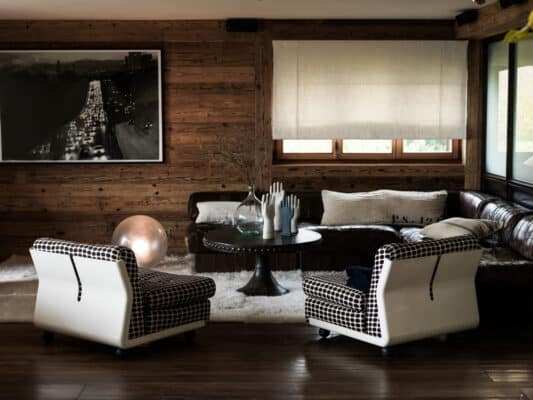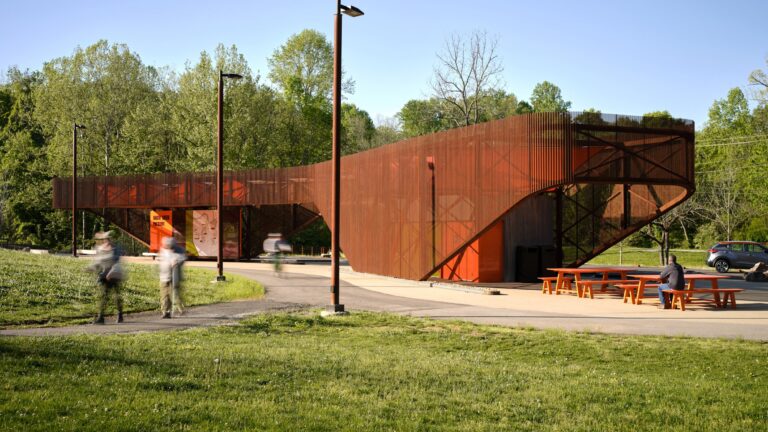In the heart of the Swiss Alps, Chalet 1936 underwent a stunning transformation led by interior designer Marianne Tiegen. She turned an old hotel into a private home that truly reflects sustainable interior design by embracing circular design principles. Instead of buying new materials, Marianne focused on reusing, restoring, and giving old items a new life. This approach shows how luxury and sustainability can go hand in hand.
Circular Design: The Foundation of Sustainable Interior Design
Marianne sourced materials from antique shops, second-hand markets, and architectural salvage yards. Then, she worked closely with local craftsmen to adapt these pieces to fit the home’s needs. This process respects the history and story behind each object while creating a unique and functional space.
For example, an old zinc gutter from a farm was transformed into a pendant lamp. It now hangs above a 4.5-meter-long dining table made from reclaimed oak wood. The project also restored antique fireplaces, which bring warmth and a rich history to the rooms. Walls covered with wood taken from alpine barns add a natural, textured look that complements the home’s rustic yet elegant feel.
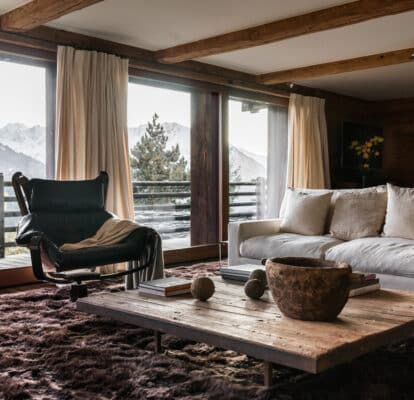
Natural Materials That Support Healthy Living
The materials Marianne chose do more than just look good. They contribute to healthier indoor air and a longer-lasting home. She applied breathable, mineral-based limestone paint on the walls. This paint contains no harmful chemicals and naturally ages with time, keeping the home fresh and eco-friendly.
Furniture in the home includes Belgian linen sofas and vintage wooden tables. The bedrooms feature organic cashmere bedding and old linen throws, creating cozy, natural spaces. Bathrooms display restored stone basins and antique mirrors, adding character while avoiding new resource extraction.
Practical Lessons for Designers
Chalet 1936 offers a powerful example for architects, interior designers, and product creators who want to build with sustainability in mind. It proves that reclaimed materials can form spaces that are both beautiful and practical. Working with local artisans avoids mass production and promotes lasting quality. Importantly, the project celebrates imperfection, showing how old materials tell stories and add soul to modern homes.

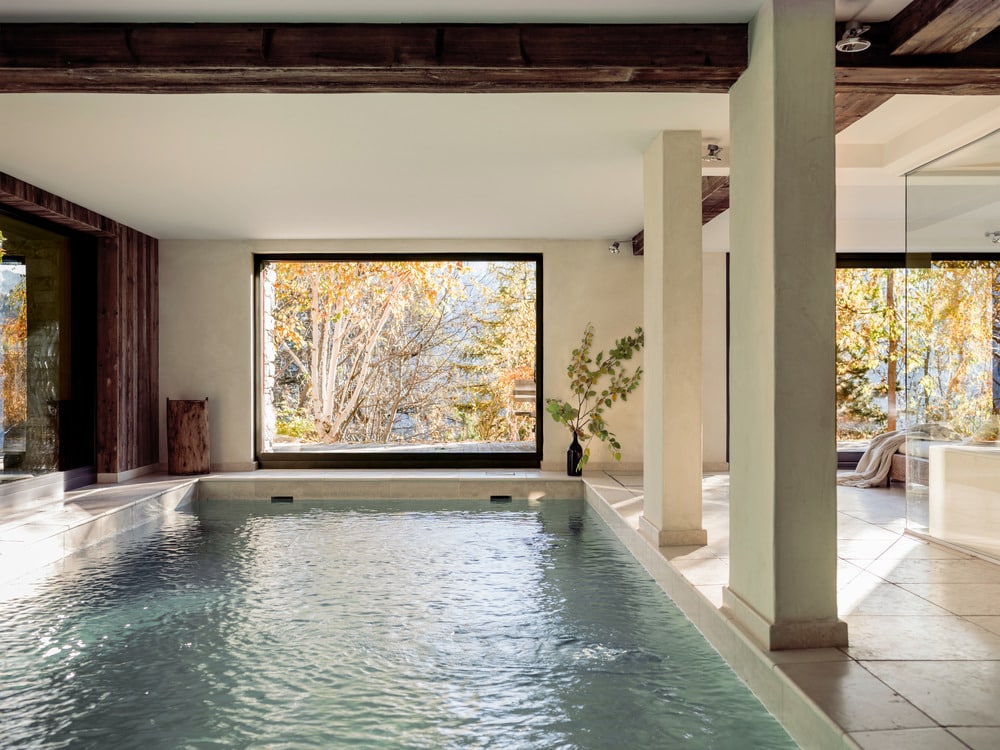
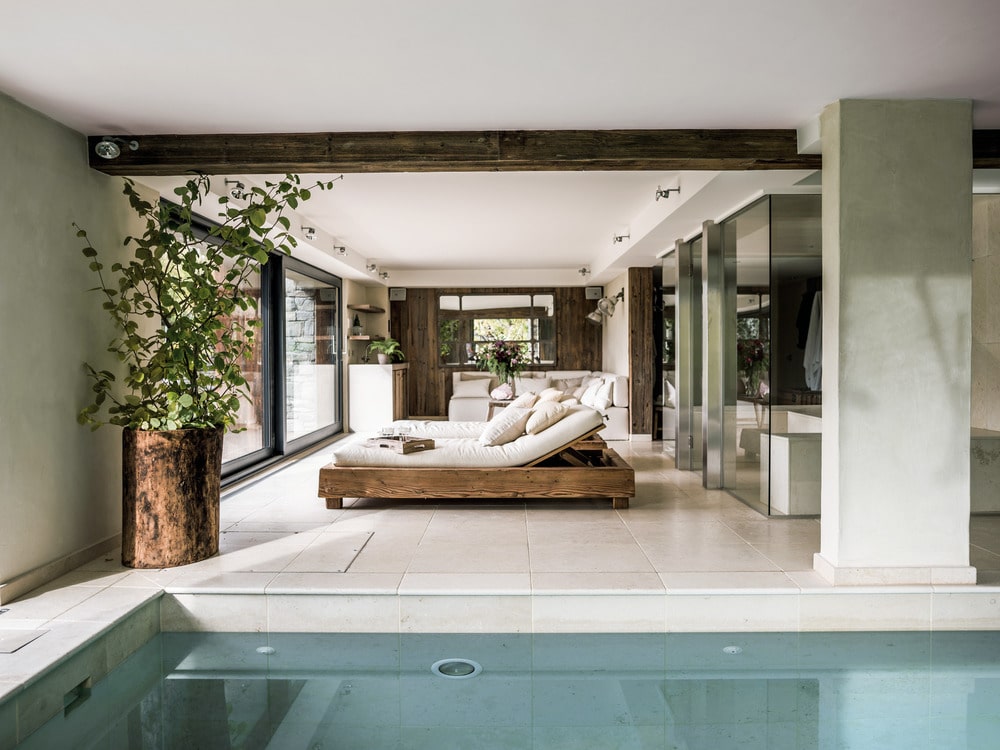
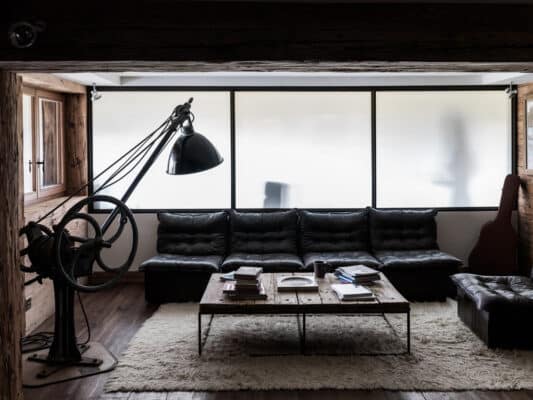
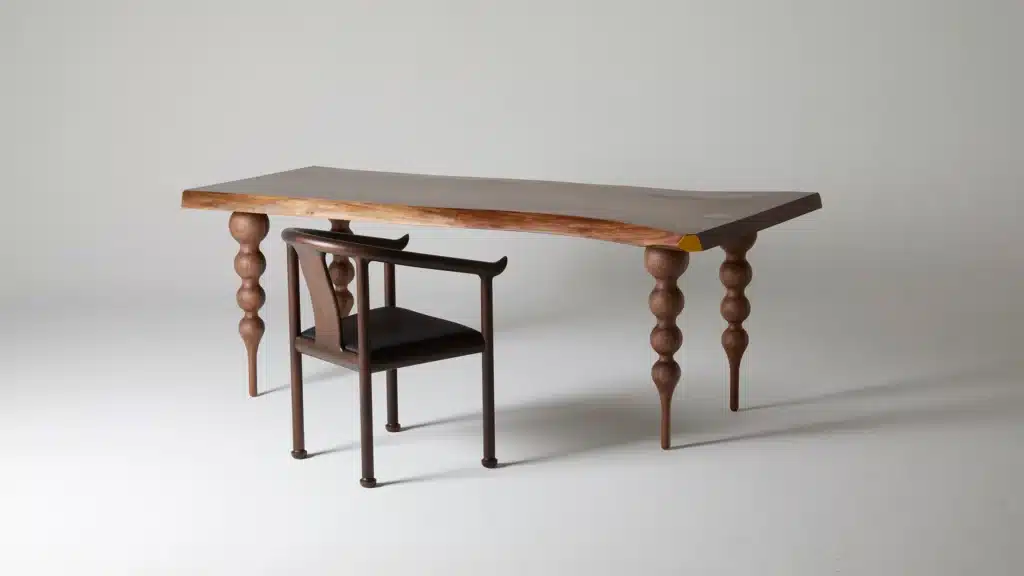
Technical & Environmental Impact of Materials in Chalet 1936
| Material | Technical Properties | Environmental Benefits | Source or Process |
|---|---|---|---|
| Reclaimed Oak Wood | High thermal mass, durable, resistant to pests | Reduces deforestation and embodied carbon | Salvaged from dismantled alpine barns |
| Recycled Zinc | Corrosion-resistant, recyclable, long lifespan | Minimizes raw material extraction and energy use | Reused from farm rooftops and facades |
| Mineral Limestone Paint | Breathable, mold-resistant, VOC-free | Improves indoor air quality, naturally derived | Lime-based formula with no chemical binders |
| Organic Cashmere | Soft insulation, moisture-regulating | Renewable, biodegradable, low chemical treatment | Repurposed antique textiles |
| Restored Stone Basins | Dense, thermal stable, long lifespan | Prevents quarrying, extends lifecycle of historic materials | Rescued from dismantled historical estates |
Environmental Impact of Materials Used
| Material | Environmental Benefit | Source |
|---|---|---|
| Reclaimed Oak Wood | Saves forests, reduces carbon emissions | From dismantled alpine barns |
| Recycled Zinc | Lowers mining impact through recycling | Salvaged from old farm buildings |
| Mineral Limestone Paint | Non-toxic, breathable, improves air quality | Natural mineral-based formula |
| Organic Cashmere | Sustainable fiber, biodegradable | Antique textiles repurposed |
| Restored Stone Basins | Preserves resources, avoids new quarrying | Restored from historic fixtures |
Why This Matters
Marianne’s work shows that sustainable interior design is not just about materials; it’s about care and respect. Each reclaimed piece carries history and craftsmanship. This approach encourages us to rethink waste and value what already exists. It reminds us that our homes can be both stylish and responsible, offering comfort without costing the earth.

Chalet 1936 perfectly illustrates the power of sustainable interior design based on circular principles. It combines luxury with eco-consciousness, proving that sustainability enhances rather than limits creativity. Designers who follow this path can create spaces that honor tradition, protect the environment, and inspire a more mindful way of living.
What truly sets Chalet 1936 apart is the human touch embedded in every detail. Marianne Tiegen’s approach goes beyond sustainability—it’s about honoring the stories and craftsmanship behind each reclaimed item. This care creates a warm, lived-in atmosphere that connects the past with the present. The imperfections and marks on the materials tell personal histories, making the home feel authentic and full of soul. This human connection is what transforms a space from merely eco-friendly to deeply meaningful and inspiring.
Stay updated with the latest in architectural content—projects, trends, and bold ideas—through the ArchUp platform.

